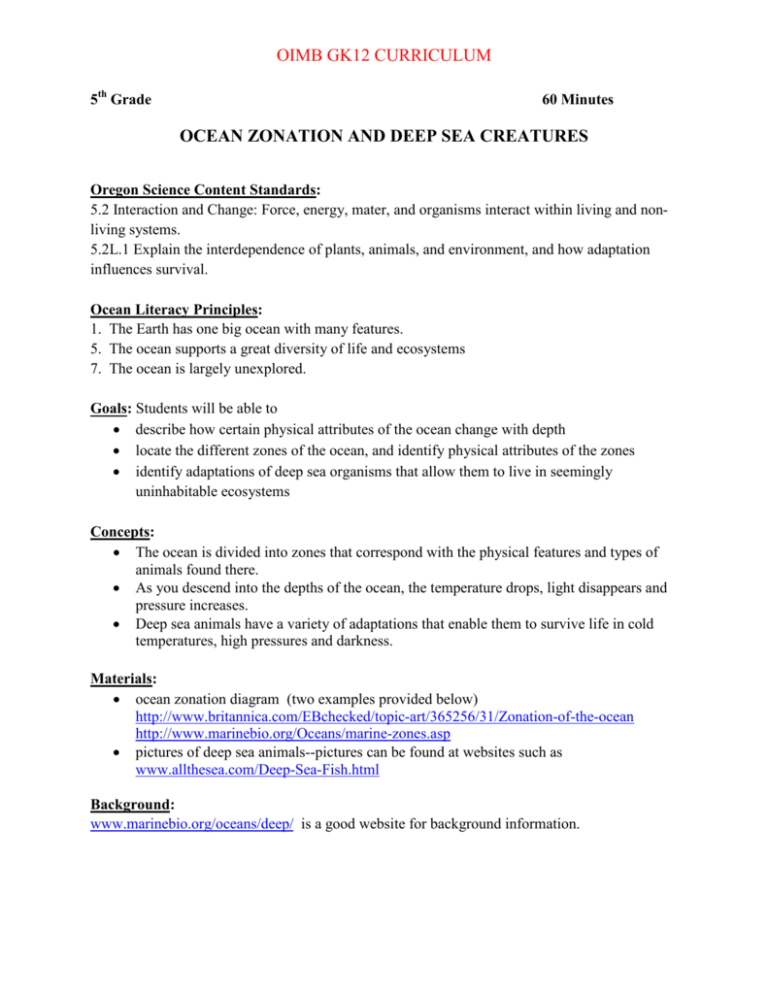Ocean Zonation & Deep Sea Creatures
advertisement

OIMB GK12 CURRICULUM 5th Grade 60 Minutes OCEAN ZONATION AND DEEP SEA CREATURES Oregon Science Content Standards: 5.2 Interaction and Change: Force, energy, mater, and organisms interact within living and nonliving systems. 5.2L.1 Explain the interdependence of plants, animals, and environment, and how adaptation influences survival. Ocean Literacy Principles: 1. The Earth has one big ocean with many features. 5. The ocean supports a great diversity of life and ecosystems 7. The ocean is largely unexplored. Goals: Students will be able to ! describe how certain physical attributes of the ocean change with depth ! locate the different zones of the ocean, and identify physical attributes of the zones ! identify adaptations of deep sea organisms that allow them to live in seemingly uninhabitable ecosystems Concepts: ! The ocean is divided into zones that correspond with the physical features and types of animals found there. ! As you descend into the depths of the ocean, the temperature drops, light disappears and pressure increases. ! Deep sea animals have a variety of adaptations that enable them to survive life in cold temperatures, high pressures and darkness. Materials: ! ocean zonation diagram (two examples provided below) http://www.britannica.com/EBchecked/topic-art/365256/31/Zonation-of-the-ocean http://www.marinebio.org/Oceans/marine-zones.asp ! pictures of deep sea animals--pictures can be found at websites such as www.allthesea.com/Deep-Sea-Fish.html Background: www.marinebio.org/oceans/deep/ is a good website for background information. OIMB GK12 CURRICULUM Lesson Plan: 1. Display an ocean zonation diagram on the board/ overhead / projected onto a screen. If you wish, students can also have a hard copy of the diagram to add notes to as they learn about each zone. 2. Have students label the different zones. 3. Describe what happens as you travel down through the ocean zones (i.e. in a submarine). The temperature drops, light diminishes rapidly, and pressure increases. If this trend continues, what must conditions be like in the deep sea? Refer to background information. 4. What are some adaptations that animals might have if they live in the deep sea? Refer to background information. Write students’ ideas on the board. 5. Show pictures of deep sea animals, and discuss adaptations that each animal has that enable them to live in the deep sea. Pictures can be found at websites such as www.allthesea.com/Deep-Sea-Fish.html . This website also includes descriptions of zones and adaptations. 6. Have students draw a picture of an animal (real or imaginary) that they might find in the deep sea, and have them write down adaptations that their animal has for living in the deep sea. Assessment: The picture and description of adaptations of their deep sea creature. GK12 Fellow: Jim Trainer






